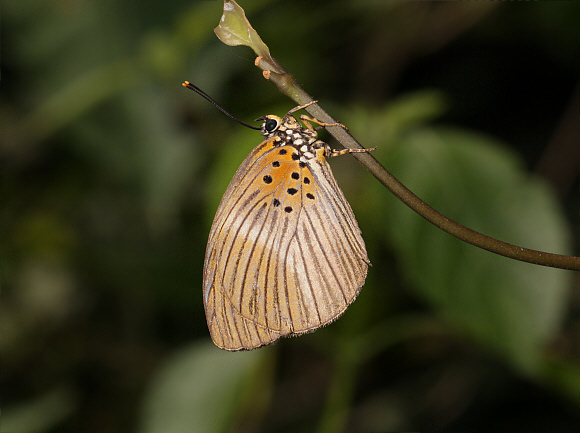
Introduction
The genus Aethiopana is closely allied to Hewitsonia. It comprises of just a single species honorius.
In common with Hewitsonia, Epitola and several other Liptenid genera, males of honorius have a dazzling metallic blue upperside. The wings glint in the sunlight, reflecting so much light that the butterflies can be spotted from a distance of at least 200m. Females are blackish, with silvery-blue scales at the base of the wings, and broad white diagonal bars on the forewings.
The underside of both sexes has an orange area at the base of the hindwing, and within this area is a group of irregularly positioned black spots, giving the butterflies a very Acraea-like appearance. It is likely that insectivorous birds would be fooled into rejecting Aethiopana as a meal, thinking them to be an unpalateable Acraea species.
Aethiopana honorius is distributed from Senegal to Cameroon, Gabon, Congo and western Uganda.
Habitats
This butterfly is found in rainforest habitats, along logging roads and around the edges of large grassy glades or clearings.
Lifecycle
The larvae feed on algae growing on the bark of trees.
Adult behaviour
Males have a large black oval patch of androconial scales in the discal cell of the forewing. These scales emit pheromones which are wafted in front of the females during courtship, and used to entice them into copulation.
Both sexes habitually settle and rest on tendrils or thin stems, close to the ground. If disturbed they fly up into the trees, with a rapid twisting flight.
